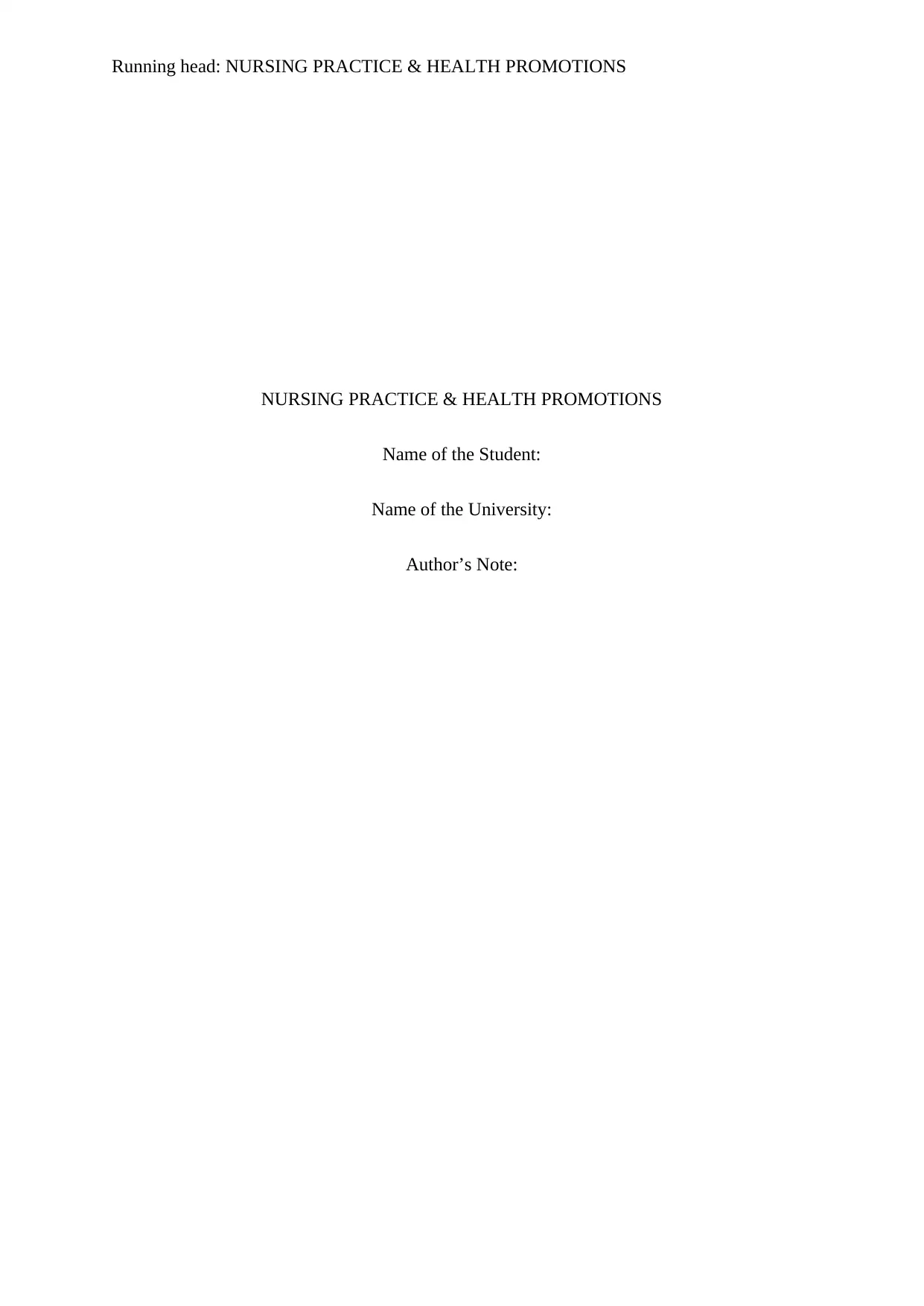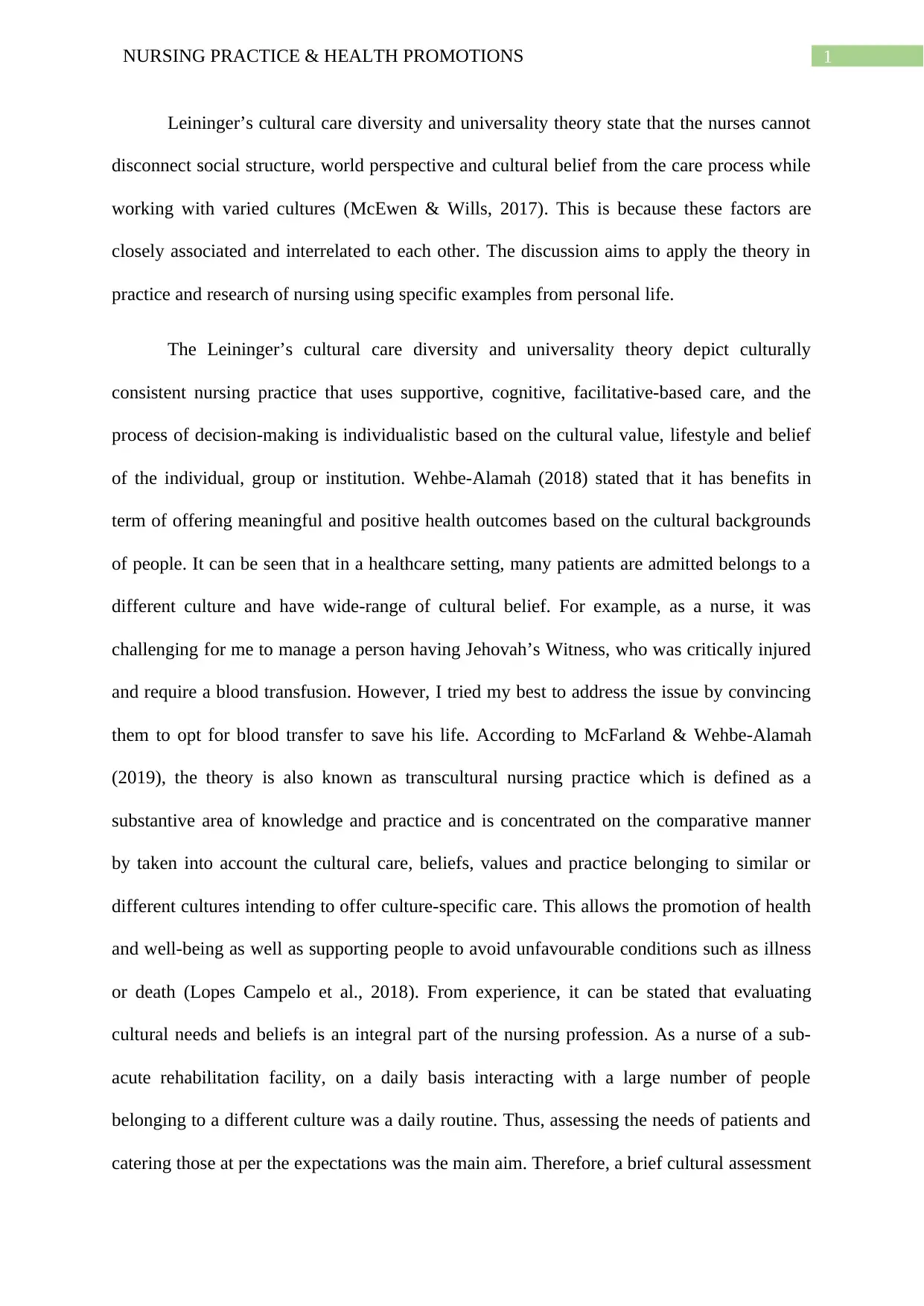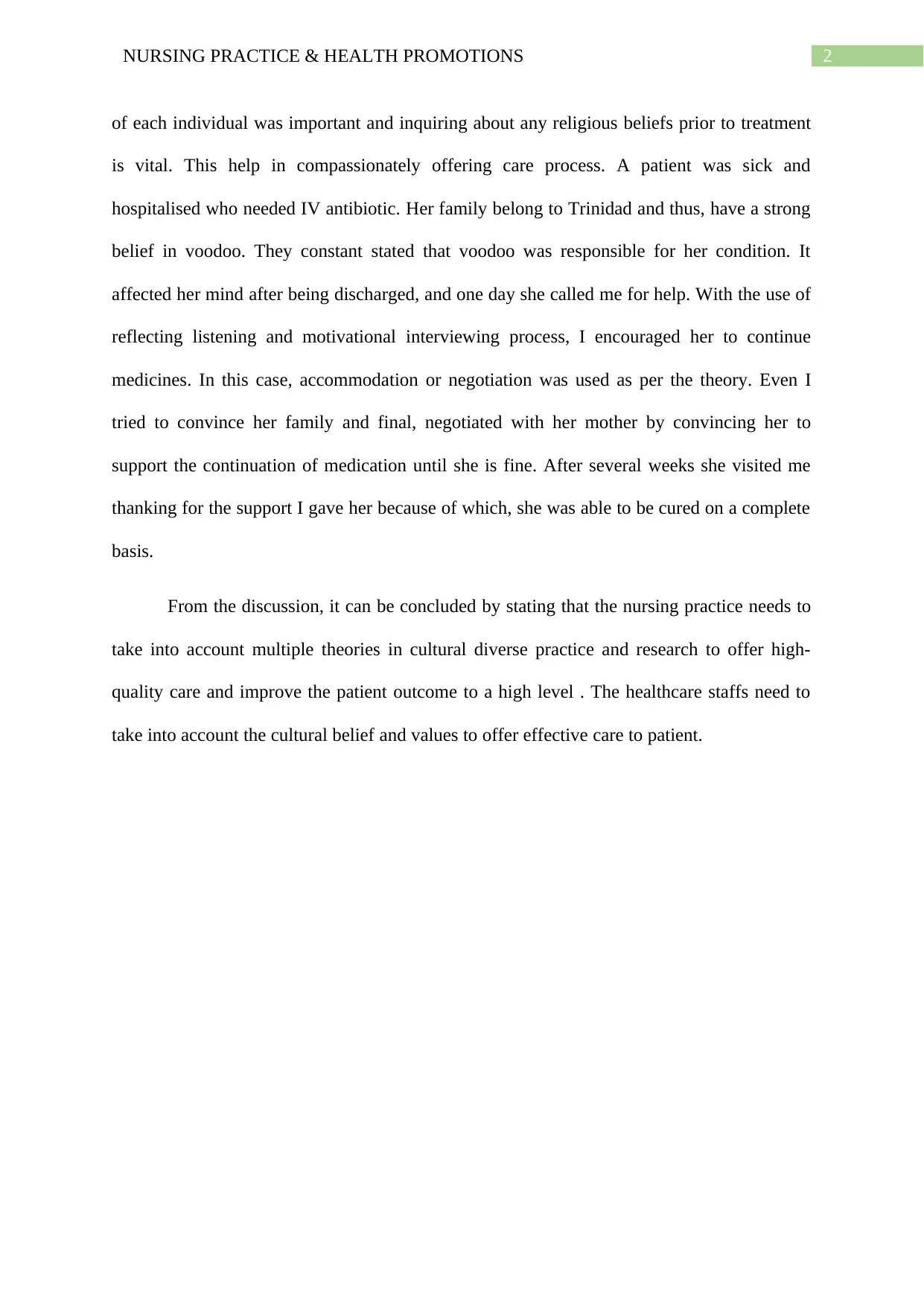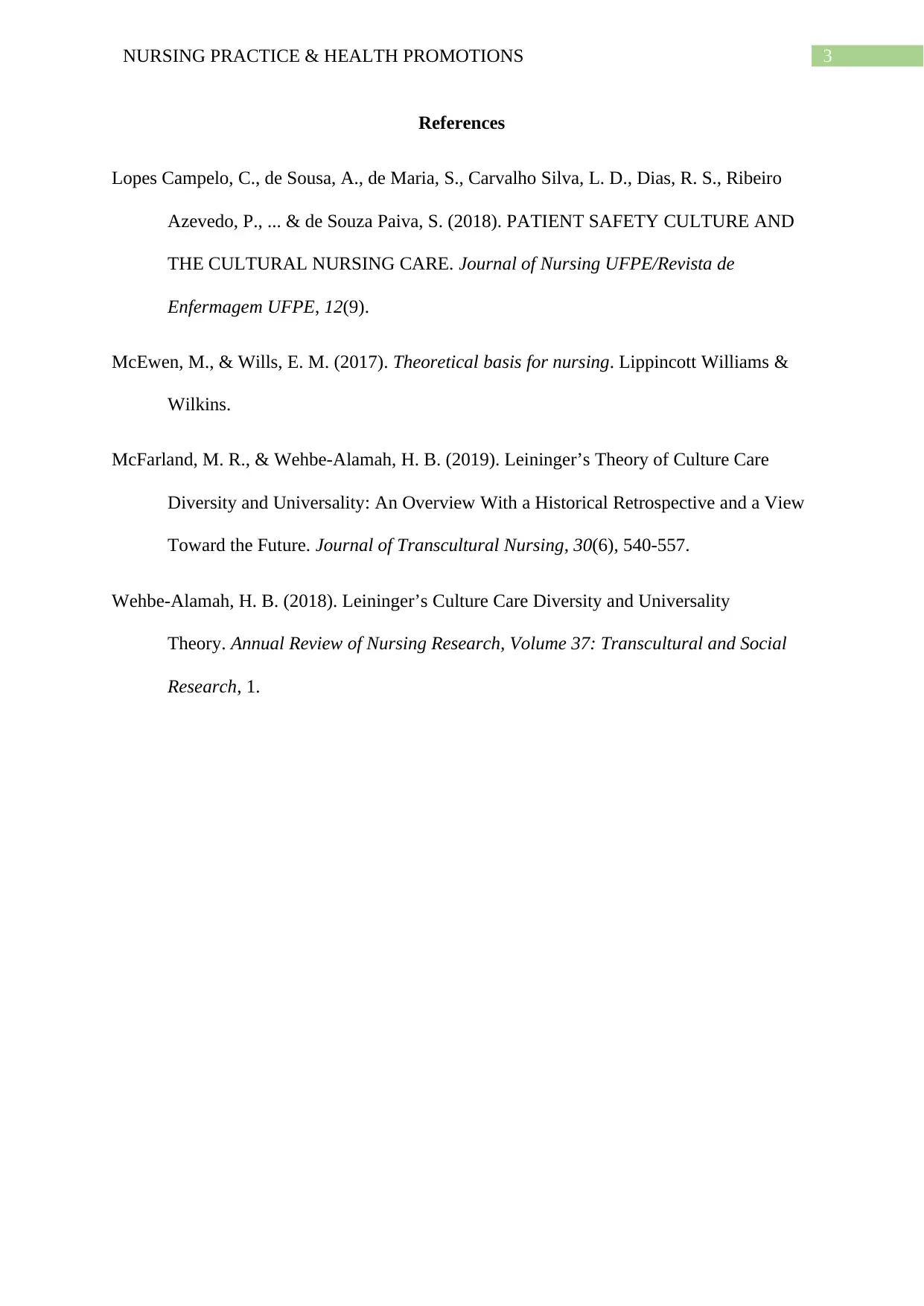Theory Application in Nursing Practice & Health Promotions Essay
VerifiedAdded on 2022/08/23
|4
|841
|14
Essay
AI Summary
This essay discusses the application of Leininger's cultural care diversity and universality theory in nursing practice and research. It highlights the importance of considering social structure, world perspective, and cultural beliefs in patient care. The theory emphasizes culturally consistent nursing practice, which uses supportive, cognitive, and facilitative-based care, with decision-making tailored to the individual's cultural values and lifestyle. The essay provides personal examples of challenges faced while managing patients with diverse cultural beliefs, such as Jehovah's Witnesses and individuals with strong beliefs in voodoo. It emphasizes the need for cultural assessment, reflective listening, and negotiation to provide effective care and improve patient outcomes. The essay concludes that nursing practice should integrate multiple theories to offer high-quality care in culturally diverse settings.
1 out of 4











![[object Object]](/_next/static/media/star-bottom.7253800d.svg)